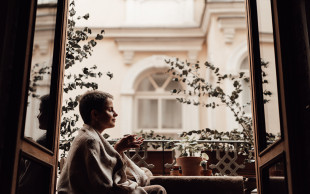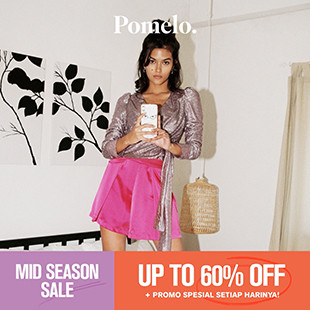Together with Vishal from NJ Bhagwan, a family business since the 1950s, STYLEGUIDE explores the seldom-revealed world of textiles and fabrics that make up everything we wear from shirts to suits to wedding gowns.
Can you tell us more about NJ Bhagwan and how it started?
NJ Bhagwan started as a retail store incorporated in 1951 as a family business. NJ actually stands for the first letter of my dad’s two elder brothers’ names, and Bhagwan is the name of my grandfather's business partner’s son, so that is actually the story behind the name.
Around the mid-1970s, my dad started an agency business representing mills and merchants on the second floor of the retail store. He was a pioneer in that field and to give an idea of longevity, he has represented all the major brands including the most pre-eminent ones in the industry for many decades. An example would be the top French lace producer in the world, Sophie Hallette, which is famous for producing Kate Middleton’s wedding outfit designed by Alexander McQueen.
My dad was their first overseas agent, and we've been representing them for the better part of 40 years. On the suiting side, I can give the example of Vitale Barbaris Canonico, VBC as it's commonly known, which is the largest and probably the most famous mill in Italy. We've been agents for them in our markets for 30 years.
We have a very close partnership with these brands and have been with them since their nascent days in Southeast Asia.
How has the industry and market changed over the years?
On the business side, we have evolved from purely being an agent (where we supply to large wholesalers who then redistribute into the market) to actually being distributors ourselves. What that means is that we now hold a large inventory of goods from various brands, whether it's in suiting or shirting or French lace, which we then redistribute into the market.
Looking at the tailoring part of the business, we now support every tailor across Southeast Asia – Singapore, Malaysia, Thailand, Indonesia, Vietnam. The one thing that is constant over the years is that we are trusted advisors to our brand partners in these markets.
A big focus since I've come into the business is on building the brand awareness of fabrics, which is sometimes hidden to the consumer because they only see the names of the designers, or of the tailor stores, and they're much less familiar with the underlying brand of the cloths that they are using.
Another big change in the industry has been the emergence of China which has now become a very big player in producing fabrics as well.
We've seen them come into the market across shirting, suiting, and lace as well, so that has disrupted the market as they provide a lower cost point to many individuals.
While China produces some very good fabrics,they generally are of a lower quality than European fabrics. If we look at wool as an example, 100% wool generally comes from Europe whereas in China and Asia, they focus more on producing polywool which is a blend of polyester and wool. European quality is generally regarded as much better, albeit more expensive too.
What are your thoughts on our Singaporean lifestyle or the way we dress?
I guess the first thing is that Singapore is very hot. Having lived in Hong Kong for a long time where you have seasons, you can see that the variety of dressing is there - in layman’s terms maybe you'll be wearing a jacket more often than you'll be doing so in Singapore. In terms of dress wise, I'll say Singapore is fairly conservative. There seems to be an obsession with wrinkle-free shirting strangely. Wrinkle-free cloth means that there is a chemical over the fabric - the more chemicals, the less wrinkles the fabric will leave. However you're going away from the natural fibres, so I always find this nuance a bit interesting. People also like thicker cloth in Singapore because they don’t like to show the skin below the fabric - these are some pecularities of the generally conservative Singapore market. I think the street style in countries like Hong Kong and Vietnam can be a bit more interesting.
I would encourage Singaporeans to be more adventurous, especially given the range of options available. There's no reason that because you have to be business casual, you can’t play with your fabric choices. For example, you can wear some khaki linen pants instead of the classic black or blue. So I think it's something that Singaporeans can explore, especially now that most businesses are less formal in their dress sense. Get away from the classic black, blue and grey and maybe experiment a little bit, perhaps just on Fridays or on the weekends.
What are some interesting things you have observed about tailoring in Singapore ?
Singaporeans are very lucky that we live in a market where there's a large number of tailors. Tailoring is very accessible to a large number of consumers, in contrast to somewhere like the United States where the majority of people consume off-the-rack and it's much harder to come by a tailor.
So we should take advantage of this. I rarely buy things off the rack anymore when the alternative is so easily accessible with a garment fully-customised to yourself. I see no reason for anybody to spend hundreds of dollars on a ready made shirt off-the-rack when you can get something at a similar price point at your local tailor.
I have also noticed a peculiarity in the tailor-client relationship. There is this distance and almost fear or unwillingness, for the lack of a better word, to question the tailor too much or have a robust discussion with them. This is unlike other forms of consumption, like booking a hotel room for your vacation for example, where we diligently check everything. It is almost like a doctor-patient or banker-client relationship, where people are afraid to ask questions for fear of coming across silly. I have noticed this even among otherwise well educated and well informed individuals. Don't be afraid to ask questions, and most importantly, enjoy the process and the final bespoke garment that is made specially for you.
What are some misconceptions about wool?
There's always a misconception that wool is a very warm cloth, and not suitable for warmer weather. In actuality, wool, as a natural fibre absorbs and evaporates moisture better than most other textiles. For example, a polywool blend is actually warmer than 100% wool.
What is more relevant is the weight and the weave of the woolen fabric. The ideal weight I think for Singapore is likely around 270 to 300 grams, but it also comes down to styling preferences. A heavier weight is generally warmer.
The weave of the fabric will also make a difference. A very loosely weaved fabric – which means the warp and the weft is not tightly woven together – means that there is more space between the fibres which makes it a more breathable fabric. Conversely, the more tightly woven cloths tend to be warmer.
Another question I always get is the trade off between wool and polywool for a suit or a pair of trousers.
There is no precise answer and it really comes down to budgetary considerations and also what you want the garment for and how you want to maintain your article. For example, a wool-polyester blend can be machine-washed so it's quite a useful proposition for people in these regions, like Singapore, where you can’t reuse your clothes more than once or twice because of the weather. If you want to handwash or machinewash your clothes, most wool-polyester blends will allow it. However, 100% wool is really recommended to be dry-cleaned.
Personally, I always go for 100% wool. I prefer natural fibres and there is a wide enough variety to choose from for all occasions.
What should people know about before visiting a tailor?
In today's day and age, there's a lot of information online. So I think before an individual visits a tailor, he should have some sense of what he's looking for from a styling perspective – whether he's looking for a single-breasted suit, or double-breasted suit, or how tight or how short he wants his pants – and I think the tailor will always fit better when the client comes in knowing what style he or she may want.
Of course, it's then the onus of the tailor to understand what the client is telling him or her, and to add on his/her suggestions and preferences. I guess a lot of consumers visit tailors based on their brand and reputation – which I think is a good metric – but I think they should also realise that when they visit a tailor, there are two very important facets that go into the final garment.
First is the quality of the underlying fabric.
Second is the style, guidance, skill, and handicraft of the tailor.
I think consumers really rely only on the second and ignore the former. It is important that consumers know, just as there are brands of tailor stores, there are also brands associated with the underlying fabrics. .
For example if you are consuming some of the top European brands like Holland & Sherry or Piacenza, you're getting an assurance of quality - like how you would feel if you go into Hugo Boss and buy a shirt or go into Chanel to buy a bag. Essentially, you're buying into the brand and the assurance of quality that comes with that label.
Quality of the fabric can manifest itself in different ways such as quality of raw materials used – Merino wool and long stapled cotton yarns for example - durability, whether it shrinks or whether the colour fasteners run after a few washes et cetera. All these factors really come out from the branding of the material.
For example we distribute Soktas shirting, one of the best cotton mills in the world which even grow their own yarns. Their shirts will definitely be more durable and comfortable, but also more expensive than non-branded alternates.
That does not mean that consumers should not purchase non-branded fabrics; they should understand the differences between the European brands and maybe the Chinese alternates. Maybe their budgets only allow for the Chinese alternates, that is perfectly fine, but it is a trade-off and a decision that they should be empowered to make themselves.
So I think people need to spend a little bit of time to understand the origins and brand of the underlying cloth that you are consuming.
At the end of the day, be a well educated consumer and have a good discussion with your trusted tailor to perfect your bespoke garment – the latter will enjoy such a discussion as they are often very passionate about fabrics and their craft.
Buy into the brand, both of the tailor and of the underlying fabrics that touch your skin on a daily basis.
How can we tell the quality of fabrics and know which to choose?
Different fabrics have different touches and feels to them. A fabric may feel rough or smooth but this is not a good metric or judgment because there are some fabrics which are intentionally woven to feel rough, or to feel hard, or to feel thick.
I think the choice of the type of fabric, whether it's light or heavy or rough, will probably manifest itself in the discussion with the tailor after the client has communicated the style and preferences he is looking for. The tailor will then present two or three options to the client – maybe it's 3 different cotton fabrics –and as he's exploring those options he should also take a little bit of time to understand the differences between these three alternates.
For example, the tailor may suggest the cotton from Holland & Sherry where you can have the assurance of quality. The tailor may then also present an in-house alternative which could mean it's sourced from China or Asia. In each case, he should explain the origin of the various fabrics.
The consumer can then make a decision based on price points or the pattern he likes better. At least he is aware of the fabric’s origin and know what he is buying.
The worst thing that can happen is if a consumer gets mis-sold; a consumer gets charged two or three thousand dollars and is sold a fabric that does not deserve that type of pricing.
A few pointers to make sure you are getting what you asked for ?
Look out for the brand of the fabric in the books the fabrics are presented in. You would have the tailor's label and the label of the fabric brand stitched onto the garment, particularly when you are buying a European fabric. If you're buying an in-house fabric, then that would often be missing. For the more discerning, look out for the selvedge or printing of the name, or the brand, on the side of the roll of the fabric. This proves that you are buying something genuine. And of course, visit a well reputed tailor!
















